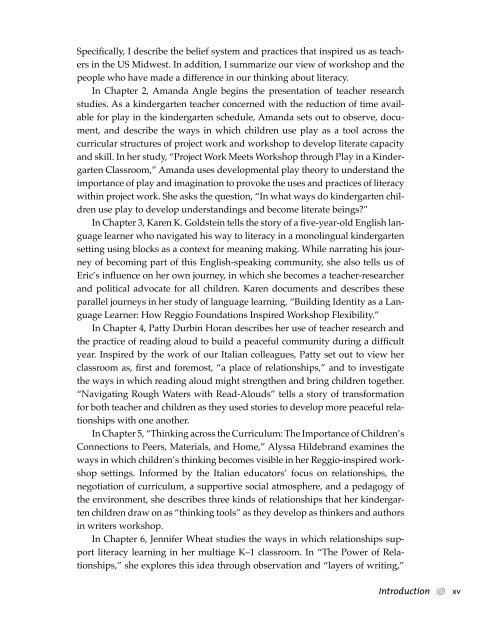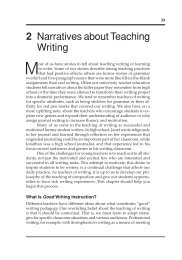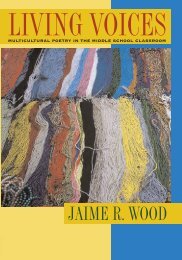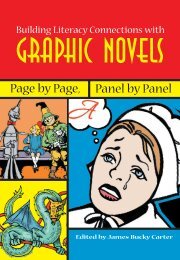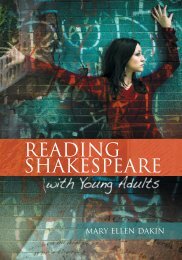View a Sample Chapter - National Council of Teachers of English
View a Sample Chapter - National Council of Teachers of English
View a Sample Chapter - National Council of Teachers of English
- No tags were found...
Create successful ePaper yourself
Turn your PDF publications into a flip-book with our unique Google optimized e-Paper software.
Specifically, I describe the belief system and practices that inspired us as teachersin the US Midwest. In addition, I summarize our view <strong>of</strong> workshop and thepeople who have made a difference in our thinking about literacy.In <strong>Chapter</strong> 2, Amanda Angle begins the presentation <strong>of</strong> teacher researchstudies. As a kindergarten teacher concerned with the reduction <strong>of</strong> time availablefor play in the kindergarten schedule, Amanda sets out to observe, document,and describe the ways in which children use play as a tool across thecurricular structures <strong>of</strong> project work and workshop to develop literate capacityand skill. In her study, “Project Work Meets Workshop through Play in a KindergartenClassroom,” Amanda uses developmental play theory to understand theimportance <strong>of</strong> play and imagination to provoke the uses and practices <strong>of</strong> literacywithin project work. She asks the question, “In what ways do kindergarten childrenuse play to develop understandings and become literate beings?”In <strong>Chapter</strong> 3, Karen K. Goldstein tells the story <strong>of</strong> a five-year-old <strong>English</strong> languagelearner who navigated his way to literacy in a monolingual kindergartensetting using blocks as a context for meaning making. While narrating his journey<strong>of</strong> becoming part <strong>of</strong> this <strong>English</strong>-speaking community, she also tells us <strong>of</strong>Eric’s influence on her own journey, in which she becomes a teacher-researcherand political advocate for all children. Karen documents and describes theseparallel journeys in her study <strong>of</strong> language learning, “Building Identity as a LanguageLearner: How Reggio Foundations Inspired Workshop Flexibility.”In <strong>Chapter</strong> 4, Patty Durbin Horan describes her use <strong>of</strong> teacher research andthe practice <strong>of</strong> reading aloud to build a peaceful community during a difficultyear. Inspired by the work <strong>of</strong> our Italian colleagues, Patty set out to view herclassroom as, first and foremost, “a place <strong>of</strong> relationships,” and to investigatethe ways in which reading aloud might strengthen and bring children together.“Navigating Rough Waters with Read-Alouds” tells a story <strong>of</strong> transformationfor both teacher and children as they used stories to develop more peaceful relationshipswith one another.In <strong>Chapter</strong> 5, “Thinking across the Curriculum: The Importance <strong>of</strong> Children’sConnections to Peers, Materials, and Home,” Alyssa Hildebrand examines theways in which children’s thinking becomes visible in her Reggio-inspired workshopsettings. Informed by the Italian educators’ focus on relationships, thenegotiation <strong>of</strong> curriculum, a supportive social atmosphere, and a pedagogy <strong>of</strong>the environment, she describes three kinds <strong>of</strong> relationships that her kindergartenchildren draw on as “thinking tools” as they develop as thinkers and authorsin writers workshop.In <strong>Chapter</strong> 6, Jennifer Wheat studies the ways in which relationships supportliteracy learning in her multiage K–1 classroom. In “The Power <strong>of</strong> Relationships,”she explores this idea through observation and “layers <strong>of</strong> writing,”Introduction D xv


